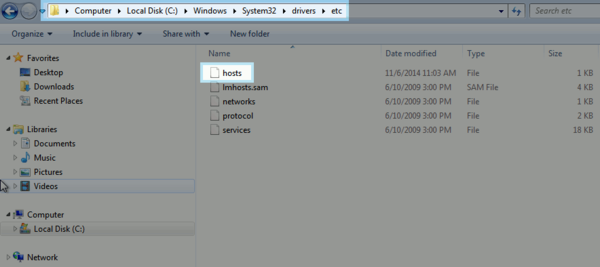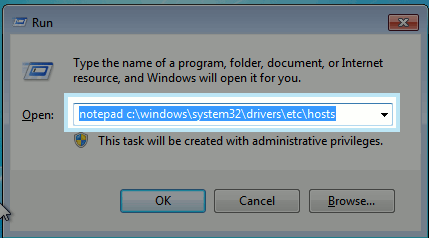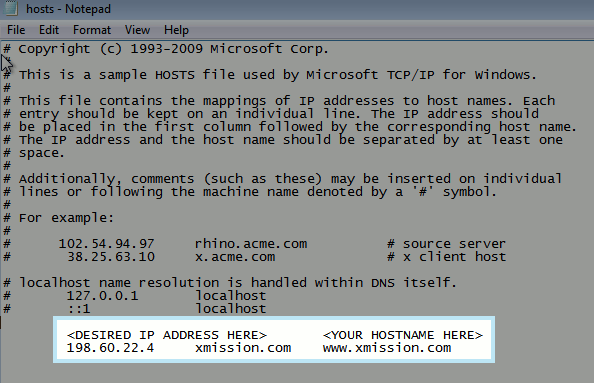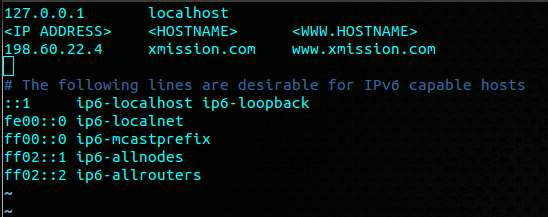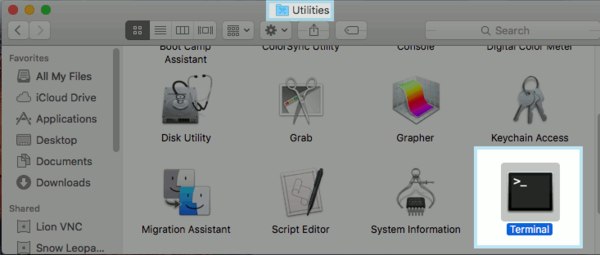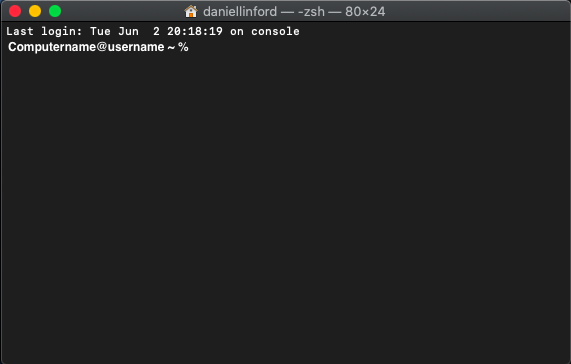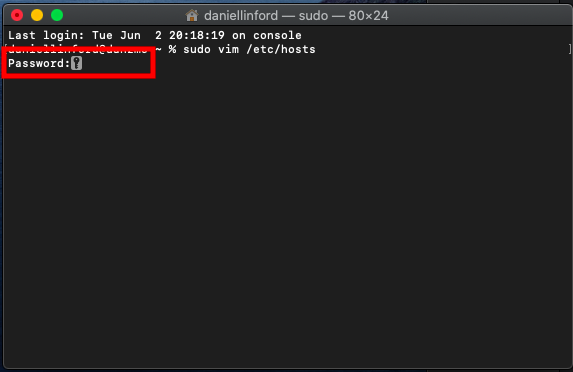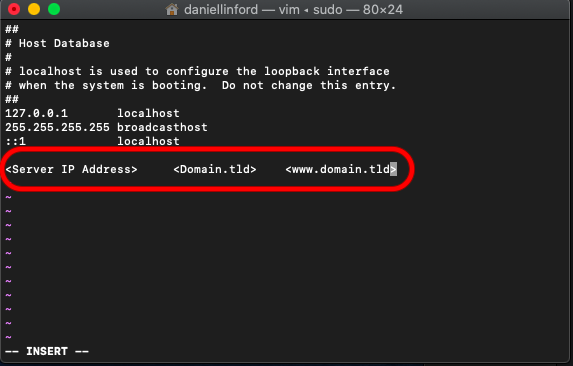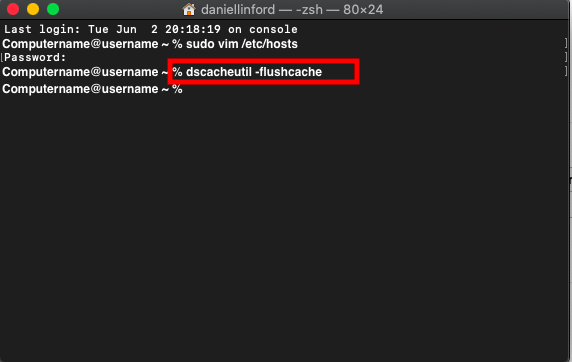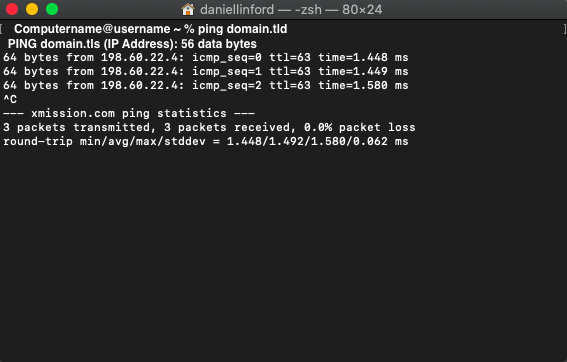Cloud Hosting/Hosts File
Jump to navigation
Jump to search
Setting Up Hosts File
- You can use these steps to view your site on your new Cloud server
- NOTE: once you have completed the migration - make sure to remove this info from your host file
Video
Windows
- Make sure you can view file extensions on your computer. Click on My Computer > Tools > Folder Options
- Under Hidden Files and Folders - make sure it states Show hidden files and folder
- Uncheck Hide extensions for known file types
- Uncheck Hide protected operating system files (Recommended)
- Click Apply
Navigate to C:\Windows\System32\drivers\etc\
- In this folder you should see a file called hosts
- You can right click and choose Open or Open with - choose Notepad (NOTE: Windows 8 and higher users need to open Notepad as administrator.)
Note: on Windows 7 you can also use the "run" tool and open the hosts file by entering:
notepad c:\windows\system32\drivers\etc\hosts
Here is what it will look like.
- Note that the pound character "#" causes the DNS software on your computer to consider anything that follows it in a line as a comment and will therefore ignore that part
- You will want to add the following information we send you to the bottom of your hosts file:
<ip-address> <domain.com> <www.domain.com>
- Where the <ip-address> is the ip address of your server (eg. 166.70.181.4) and <domain.com> is your domain name so it will look something like this:
166.70.22.1 mydomain.com www.mydomain.com
Linux
- Edit your hosts file though a terminal
- The line will look similar to this:
- From here you will want to add the IP address of your server and the hostname (example: 166.70.181.4 example.com www.example.com)
- Save and close your file. Now when you go to your domain on your computer it will resolve to the IP address you specified.
Mac OSX
- You will need to open a terminal which can be done through your utilities folder.
- Edit your hosts file though a terminal
- Type in
sudo vim /etc/hosts
- Type in
- You'll be prompted for a password, this is your user password to login to your computer.
- Once you've successfully submitted your user password, you will need to press " I " to enter insert mode, you will know you are in "insert mode" as -- INSERT -- should appear at the bottom left corner.
- Add the IP address of your server and the hostname (eg. 166.70.198.101 example.com www.example.com)
- Should look like this
- Save and close your file
- Run this in your terminal
dscacheutil –flushcache
- Now when you goto your domain on your computer it will resolve to the IP address you specified.
- You can test this by running a "Ping" in your terminal and see your host is resolving to the specified ip address.
